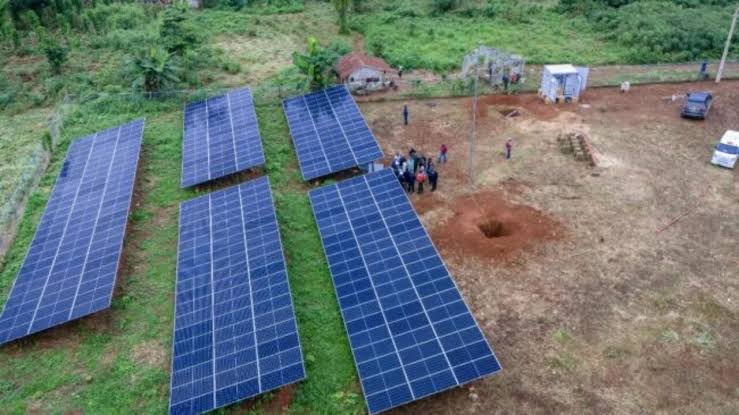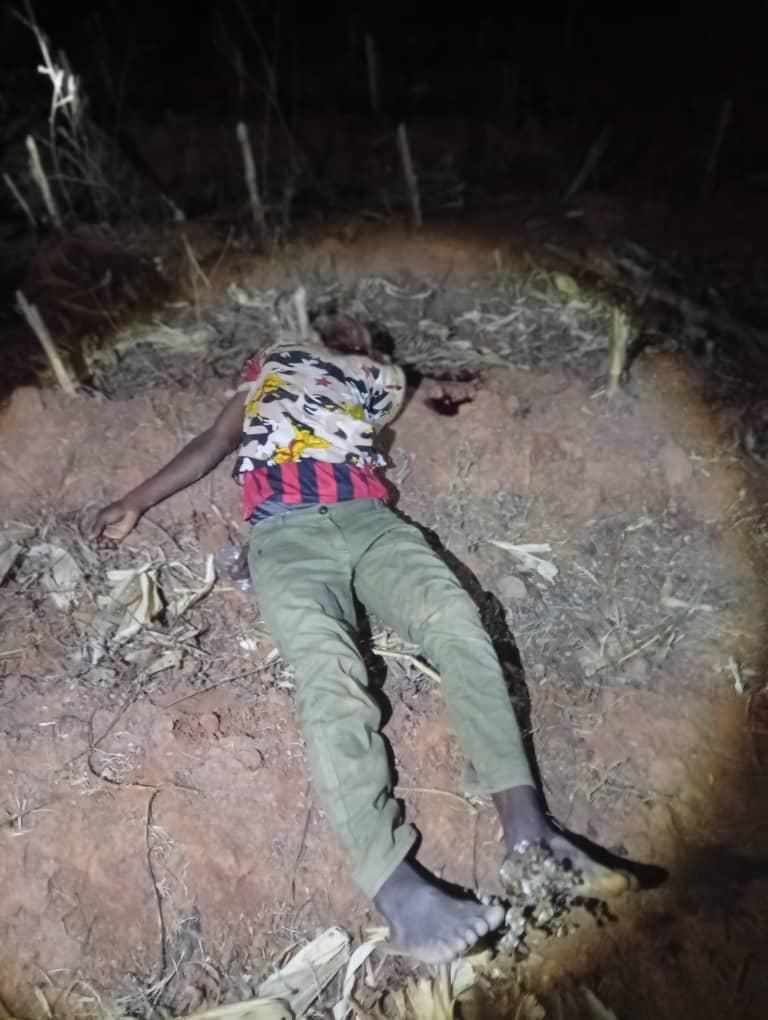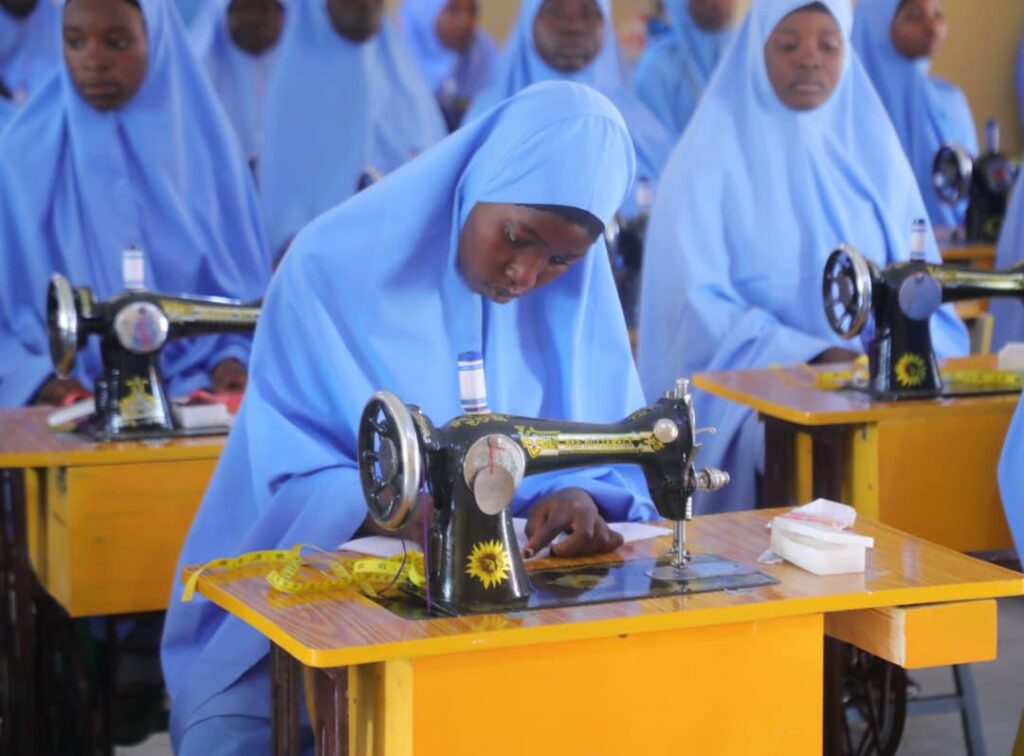News
EU, GiZ Provide Electricity to Cross River Community

EU, GiZ Provide Electricity to Cross River Community
By: Michael Mike
After six years without electricity, residents of Etomi community in Cross River State now enjoy reliable, clean, and affordable electricity through the European Union (EU)-funded solar mini-grid project.
The solar project, which provides 119.5kW of electricity to over 600 households and businesses in the community, was implemented by GIZ.
Head of Green and Digital Economy Section, EU Delegation to Nigeria and ECOWAS, Inga Stefanowicz, explained that the grid is managed under a public-private partnership arrangement to ensure its sustainability and long-term maintenance. A private company is overseeing the operations of the grid, in partnership with the Cross River State Government.
Stefanowicz said the project is part of the EU’s Global Gateway initiative, and is aimed to ensure that Nigerians have access to clean, renewable, and affordable energy.
He said: “The provision of reliable, clean, and affordable electricity for domestic and commercial use will boost the social and economic development of the people. I am also glad to say that we are taking electricity to a cocoa-producing community. This will help their farming activities and processes greatly.”
The Cross River State Commissioner for Power and Renewable Energy, Eka Williams, explained that the solar mini-grid project is an off-grid system, and expressed the conviction that it would serve the Etomi community very well. “I want to say a very big thank you to my Governor, in partnership to the EU, who have made this possible. We have a replication of this in about four communities in Etung Local Government Area (LGA).”
John Okpa, a resident of Etomi community, expressed excitement, as his community had been without electricity for over six years. He said, “Residents of the Etomi community are happy because the EU has provided us with electricity after six years of darkness. We are grateful to them, and pray that God continues to bless them.”
Precious Jeremiah, another resident of Etomi community, revealed that for seven years, she used a generator to run her hair styling business. This, according to her, comes at a high cost of fueling, repairing, and servicing the generator. “Before the installation of the solar plant, I managed my business using a generator. The cost of fueling the generator is very expensive.
“Since the installation of the solar plant, my customers can come into my shop to get their hair done and enjoy a cool and clean atmosphere devoid of generator smoke and noise. Also, I am able to make enough profit to take care of my household, including paying for the school fees of my children,” she said.
EU, GiZ Provide Electricity to Cross River Community
News
Troops neutralise bandit, recover arms in Plateau raid

Troops neutralise bandit, recover arms in Plateau raid
By: Zagazola Makama
Troops of 3 Division of the Nigerian Army, under the Joint Task Force Operation Enduring Peace (JTF OPEP), have neutralised a notorious bandit and recovered arms and ammunition during a raid on a hideout in Plateau State.
Sources told Zagazola Makama that the operation was conducted on Jan. 8 at Yolan Gboka–Yama Da Lahdi, following sustained efforts to track and arrest perpetrators of the Dec. 16, 2025 attack on illegal miners at Tosho community in Fann District, Barkin Ladi Local Government Area.

According to the sources, troops made contact with the bandits during the raid and engaged them in a firefight.
“One of the bandits was neutralised during the exchange of fire and was later identified as Sadiq Isah, while others fled the area,” the sources said.
The sources added that troops subsequently exploited the hideout and recovered two AK-47 rifles and 162 rounds of 7.62mm (special) ammunition.
The recovered arms and ammunition are currently in military custody, while troops have commenced follow-up operations to intercept the fleeing suspects and prevent further criminal activities in the area.
Zagazola reports that Operation Enduring Peace is a joint security initiative aimed at restoring peace and stability across Plateau and neighbouring states.
Troops neutralise bandit, recover arms in Plateau raid
News
FG Urges NSCDC to Boost Intelligence as Interior Minister Decorates 113 Senior Officers

FG Urges NSCDC to Boost Intelligence as Interior Minister Decorates 113 Senior Officers
By: Michael Mike
The Federal Government has called on the Nigeria Security and Civil Defence Corps (NSCDC) to strengthen intelligence gathering and operational readiness in the face of rising security threats across the country.
The call was made by the Minister of Interior, Dr. Olubunmi Tunji-Ojo, during a ceremony to decorate 113 newly promoted NSCDC commandants. The minister, represented by the Secretary of the Civil Defence, Corrections, Fire and Immigration Services Board (CDCFIB), Maj. Gen. Abdulmalik Jibrin (Rtd), commended the Corps for its role in protecting critical national infrastructure, lives, and property.

Tunji-Ojo emphasized the need for strategic intelligence mapping to counter emerging threats, particularly as the Corps now shoulders additional responsibilities for the protection of Very Important Personalities (VIPs), a role previously managed by the Nigeria Police Force.
He encouraged the newly promoted officers and all personnel to uphold the confidence placed in the service by President Bola Tinubu, noting that the merit-based promotions are designed to boost morale and enhance performance.
The Commandant General of NSCDC, Professor Ahmed Audi, urged the officers to mentor subordinates, embrace leadership responsibilities, and adhere strictly to merit-based postings. He warned against lobbying for preferred postings, affirming that performance and dedication would guide all administrative decisions.
Representing the promoted officers, Commandant Ekanem Ekpenyong pledged unwavering commitment to duty, promising to uphold integrity and the Corps’ Oath of Allegiance.
In a key highlight of the ceremony, the Corps’ National Public Relations Officer, Afolabi Babawale was promoted to the rank of Assistant Commandant. The event also featured goodwill messages from the Controller General of Corrections, the Controller General of the Federal Fire Service, and representatives from the Nigerian Army, Navy, Air Force, Police, and the Department of State Services.
The ceremony underscored the Federal Government’s resolve to strengthen the NSCDC and reinforce its role in Nigeria’s security architecture.
FG Urges NSCDC to Boost Intelligence as Interior Minister Decorates 113 Senior Officers
News
Zulum commissions remodelled ‘2nd chance school’ for vulnerable girls

Zulum commissions remodelled ‘2nd chance school’ for vulnerable girls
.Disburses N1bn to SMEs in 5 LGAs
By: Our Reporter
Borno State Governor, Professor Babagana Umara Zulum, on Thursday commissioned a fully remodelled “Second Chance School” for vulnerable girls and women in Biu Local Government Area.

The newly inaugurated facility is part of a strategic initiative designed to offer adult women, including those who missed formal education or dropped out of school due to prevailing challenges, a pathway to self-reliance.
The school’s curriculum is tailored towards providing comprehensive skills’ acquisition, critical digital knowledge and basic literacy, and numeracy training.

With the Biu centre now operational, Zulum’s administration has established three such schools across the state, with existing centres already operational in Maiduguri and Bama.
Meanwhile, Governor Zulum has disbursed N1 billion to small and medium-scale enterprises (SMEs) across five local government areas in southern Borno.
The targeted LGAs include Biu, Hawul, Shani, Bayo and Kwaya-Kusar, with the funds intended to support entrepreneurs and enhance business sustainability.
Zulum explained that the direct injection of capital into the SME sector is essential for driving grassroots development and fostering self-reliance in the post-insurgency recovery phase.
In a related development aimed at tackling youth restiveness and promoting social stability, Governor Zulum has ordered immediate employment of 200 young individuals from the Biu Local Government Area.
After the inauguration, Zulum visited Biu Specialist Hospital where he announced the immediate and automatic employment of a number of dedicated volunteer health workers who have served tirelessly.
He also inspected the 100-unit teachers’ housing estate under construction in Biu town. The estate is part of the Borno State Government’s motivational strategy to attract and retain qualified teaching professionals in public schools.
Governor Zulum has also directed immediate commencement of rehabilitation work on the Borno State Hotel Annexe in Biu.
Zulum commissions remodelled ‘2nd chance school’ for vulnerable girls
-

 News2 years ago
News2 years agoRoger Federer’s Shock as DNA Results Reveal Myla and Charlene Are Not His Biological Children
-

 Opinions4 years ago
Opinions4 years agoTHE PLIGHT OF FARIDA
-

 News9 months ago
News9 months agoFAILED COUP IN BURKINA FASO: HOW TRAORÉ NARROWLY ESCAPED ASSASSINATION PLOT AMID FOREIGN INTERFERENCE CLAIMS
-

 Opinions4 years ago
Opinions4 years agoPOLICE CHARGE ROOMS, A MINTING PRESS
-

 News2 years ago
News2 years agoEYN: Rev. Billi, Distortion of History, and The Living Tamarind Tree
-

 ACADEMICS2 years ago
ACADEMICS2 years agoA History of Biu” (2015) and The Lingering Bura-Pabir Question (1)
-

 Columns2 years ago
Columns2 years agoArmy University Biu: There is certain interest, but certainly not from Borno.
-

 Opinions2 years ago
Opinions2 years agoTinubu,Shettima: The epidemic of economic, insecurity in Nigeria





